Honor upon honor, allegation upon allegation, and a lost medal found.
Written on October 15, 2009
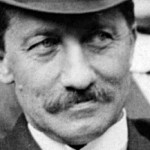 A Busy Week
A Busy Week
A hundred years ago, this was a busy week in the Polar Controversy. Peary’s long awaited “proofs” that Dr. Cook had not been to the North Pole were released in the form of a statement alleged to have been made by the two Inuit who accompanied him, along with a map on which they were said to have traced his actual route, which indicated he had turned back when still in sight of land. This map had been sent to newspapers around the country by the Associated Press on October 4 with the instructions:
 “Editors: The foregoing map is for use in connection with Robert E. Peary’s statement and it is to be held until this statement reaches you and is released. This statement will be mailed or telegraphed in time for publication with the map in morning papers of Wednesday, Oct. 13.”
“Editors: The foregoing map is for use in connection with Robert E. Peary’s statement and it is to be held until this statement reaches you and is released. This statement will be mailed or telegraphed in time for publication with the map in morning papers of Wednesday, Oct. 13.”
It was signed Charles S.Diehl, Assistant General Manager, The Associated Press.
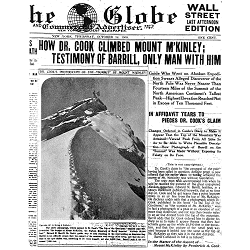
The next day, the other shoe fell in the form of an affidavit by Edward N. Barrill, Cook’s only companion on his attempt to climb Mt. McKinley in Alaska in 1906. It said Cook’s claim to have succeeded in this was a complete fraud and that the famous picture of himself standing atop the summit a fake taken miles away from the great peak and many thousands of feet lower than the actual summit.
On October 15, Barrill’s entire diary was published by the New York Globe. It seemed to corroborate Cook’s story of a successful climb, but Barrill said those passages had all been dictated by Dr. Cook to bolster his contemplated narrative of a fake ascent.
Cook had already been honored on September 23 by a monster dinner at the Waldorf Astoria by The Arctic Club of America, had raked in more than $3,000 ($60,000 today) for his first lecture at Carnegie Hall, and had been honored in city after city in which he lectured on his polar attainment.
But the greatest honor was scheduled for October 15, where he was to be given the Keys to the City of New York in the aldermanic chamber of city hall. No American had ever been so honored, and not even the sensational charges of Edward Barrill persuaded the aldermen to postpone the ceremony.
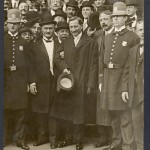
He was escorted to the chamber by a honor guard of New York Police, who kept back the big crowd. Once inside, he was first presented with a 2 ½ inch gold medal by a representative of the Arctic Club, whose medal had not been ready in time for presentation at the dinner in September.
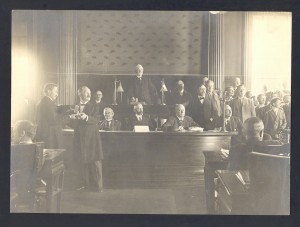
Then Cook stepped forward to receive a mahogany box containing a 15 x 23 inch engrossed scroll of vellum representing the honor being given him by the city. On the illuminated scroll were represented his igloo at the North Pole, a team of dogs pulling a sledge, and his expedition ship riding at anchor in the distance. At its top rested the Seal of the City of New York upon two draped American flags. The first initial of Cook’s name held the figure of Columbia seated on a throne, holding aloft a laurel wreath about to be placed on the explorer, clad in furs and holding a flag. The inscription began “Whereas the mystery of the ages has been solved. . . “ It was signed by the mayor.
 The scroll still exists and is on display at the Sullivan County Historical Society in Hurleyville, New York.
The scroll still exists and is on display at the Sullivan County Historical Society in Hurleyville, New York.
The whereabouts of the medal was unknown until it was uncovered in the collections of the Missouri Historical Society in St. Louis in 2005. How it ended up there is not apparent. The society’s records only showed that it was donated to them by an anonymous patron in 1914.
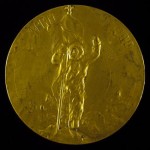
This photograph of the medal appears on the website of the Frederick A. Cook Society, where it can be viewed for an enlargement of its details.
Filed in: Uncategorized.